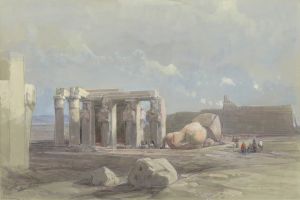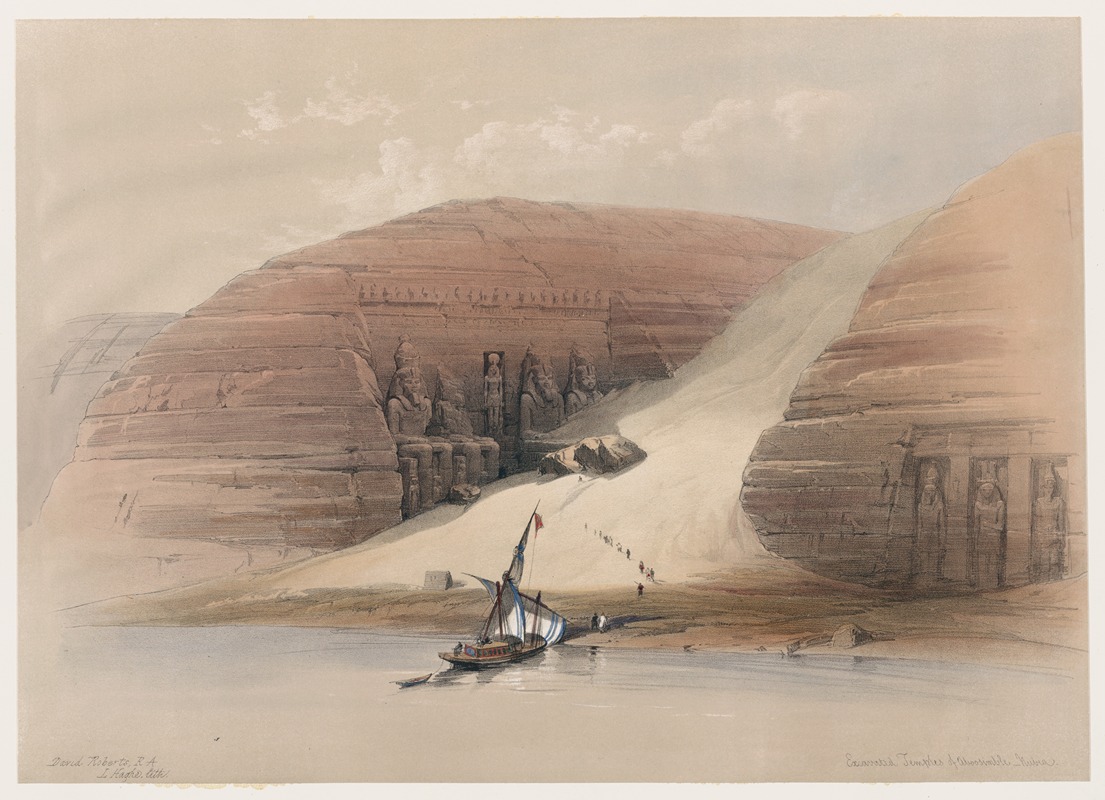
Excavated temples of Aboosimble [Abû Sunbul], Nubia.
A hand-painted replica of David Roberts’s masterpiece Excavated temples of Aboosimble [Abû Sunbul], Nubia., meticulously crafted by professional artists to capture the true essence of the original. Each piece is created with museum-quality canvas and rare mineral pigments, carefully painted by experienced artists with delicate brushstrokes and rich, layered colors to perfectly recreate the texture of the original artwork. Unlike machine-printed reproductions, this hand-painted version brings the painting to life, infused with the artist’s emotions and skill in every stroke. Whether for personal collection or home decoration, it instantly elevates the artistic atmosphere of any space.
"Excavated Temples of Aboosimble [Abû Sunbul], Nubia" is a lithograph created by Scottish artist David Roberts in the 19th century. The artwork is part of Roberts' renowned series of illustrations depicting scenes from Egypt and the Near East, which were published in the monumental work The Holy Land, Syria, Idumea, Arabia, Egypt, and Nubia. This series, produced between 1842 and 1849, is celebrated for its detailed and romanticized portrayals of historical and architectural landmarks.
The lithograph specifically depicts the temples of Abu Simbel, located in Nubia (modern-day southern Egypt near the Sudanese border). These temples were originally carved into a mountainside during the reign of Pharaoh Ramesses II in the 13th century BCE. The larger of the two temples, known as the Great Temple, was dedicated to the gods Amun, Ra-Horakhty, and Ptah, as well as to Ramesses II himself. The smaller temple was dedicated to the goddess Hathor and Queen Nefertari, Ramesses' chief consort. The temples are renowned for their colossal statues of Ramesses II that adorn the façade of the Great Temple, as well as for their intricate interior carvings and reliefs.
David Roberts visited Abu Simbel during his travels in Egypt in 1838, a journey that formed the basis for much of his artistic work. His sketches and paintings were later transformed into lithographs by Louis Haghe, a prominent lithographer of the time. These lithographs were widely admired for their technical precision and artistic quality, and they played a significant role in popularizing knowledge of ancient Egyptian monuments in Europe during the 19th century.
Roberts' depiction of the Abu Simbel temples captures the grandeur and isolation of the site, emphasizing the scale of the statues and the surrounding desert landscape. His work is considered an important historical record, as it documents the appearance of the temples before the construction of the Aswan High Dam in the 1960s, which necessitated the relocation of the temples to higher ground to protect them from flooding caused by the creation of Lake Nasser.
The lithograph is an example of the Romantic movement's fascination with the exotic and the ancient, and it reflects the 19th-century European interest in Egyptology. Today, Roberts' works are valued both as artistic achievements and as historical documents that provide insight into the cultural and archaeological heritage of the regions he visited.





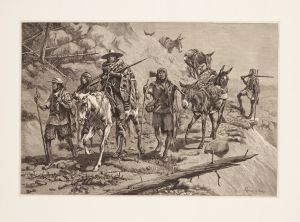

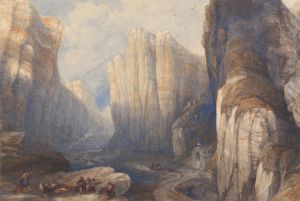
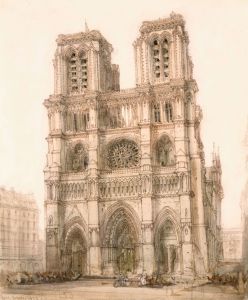
![Colossus in front of Temple of Wady Saboua [Wadi al-Sabua], Nubia.](/imgs/217471/s/david-roberts-colossus-in-front-of-temple-of-wady-saboua-wadi-alsabua-nubia-503a97c9.jpg)

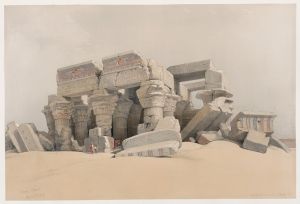
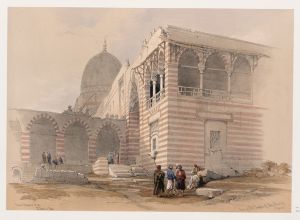
![One of two colossal statues of Rameses [sic] II. Entrance to the Temple at Luxor.](/imgs/217522/s/david-roberts-one-of-two-colossal-statues-of-rameses-sic-ii-entrance-to-the-temple-at-luxor-473c42e1.jpg)
![Portico of the Temple of Edfou [Idfû], Upper Egypt. Nov. 23rd, 1838.](/imgs/217527/s/david-roberts-portico-of-the-temple-of-edfou-idfu-upper-egypt-nov-23rd-1838-79b6cf5b.jpg)
![Temple of Kalabshee [Kalabsha, Kalâbishah], Nubia. Nov. 1838.](/imgs/217548/s/david-roberts-temple-of-kalabshee-kalabsha-kalabishah-nubia-nov-1838-be0ac440.jpg)


